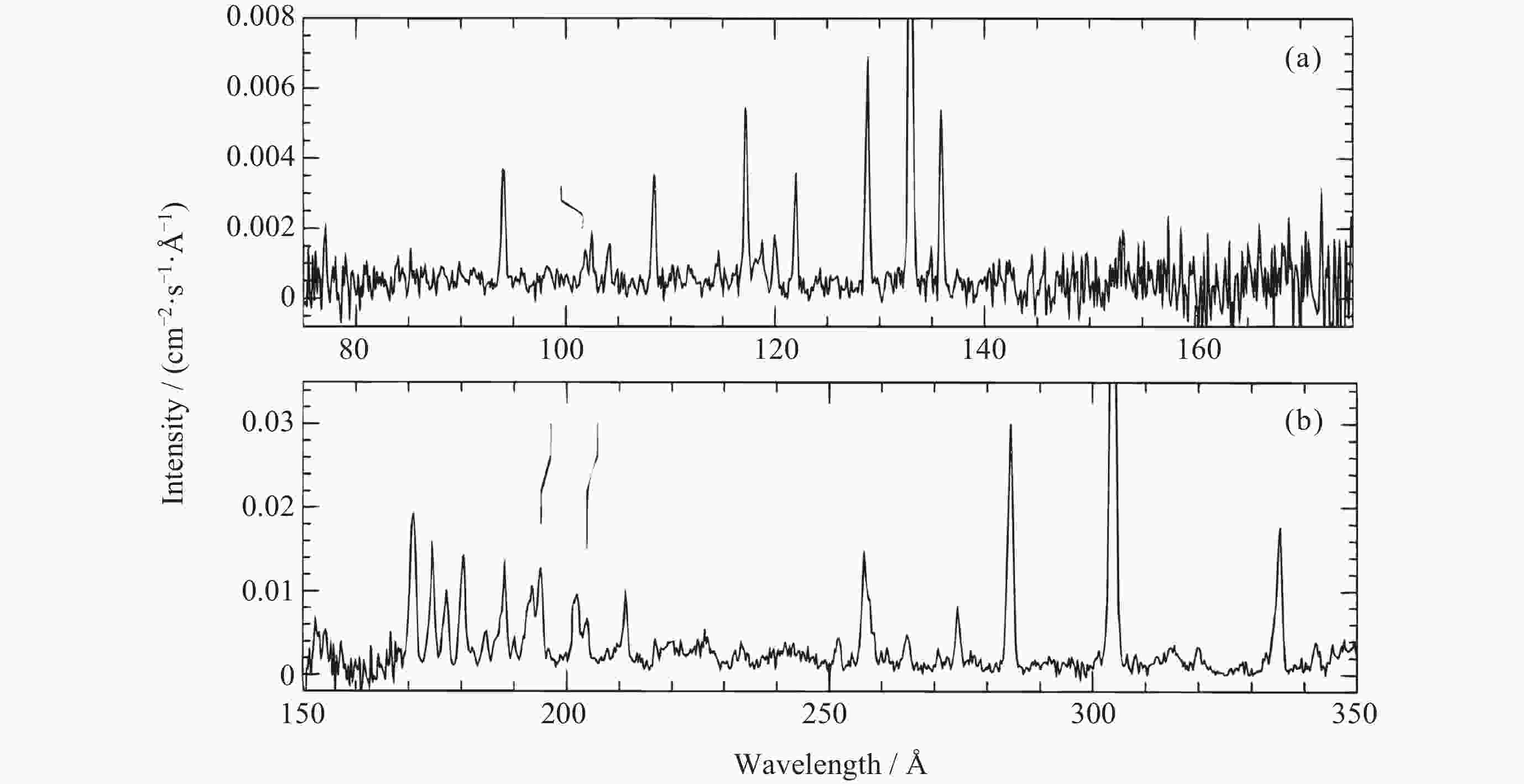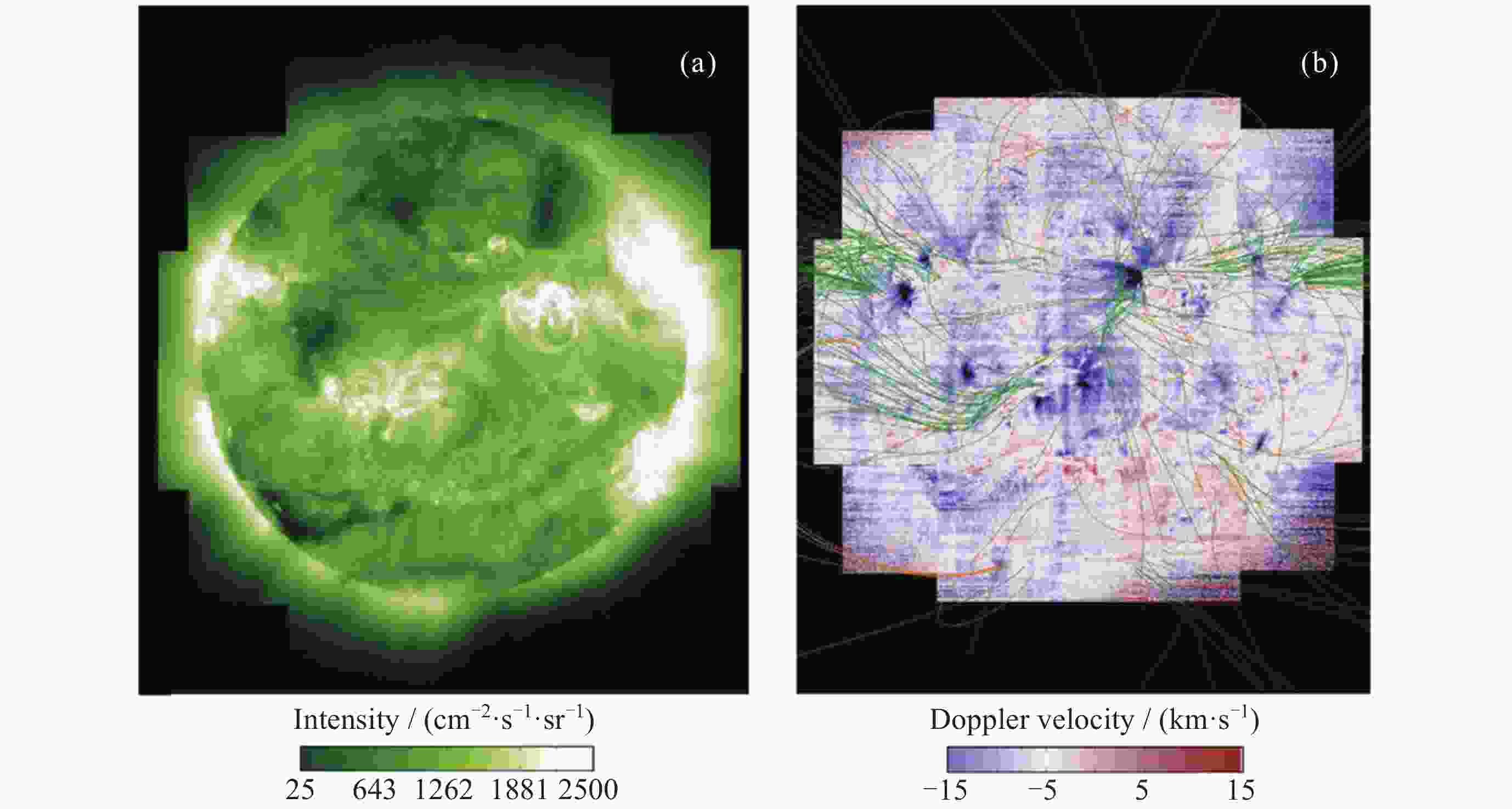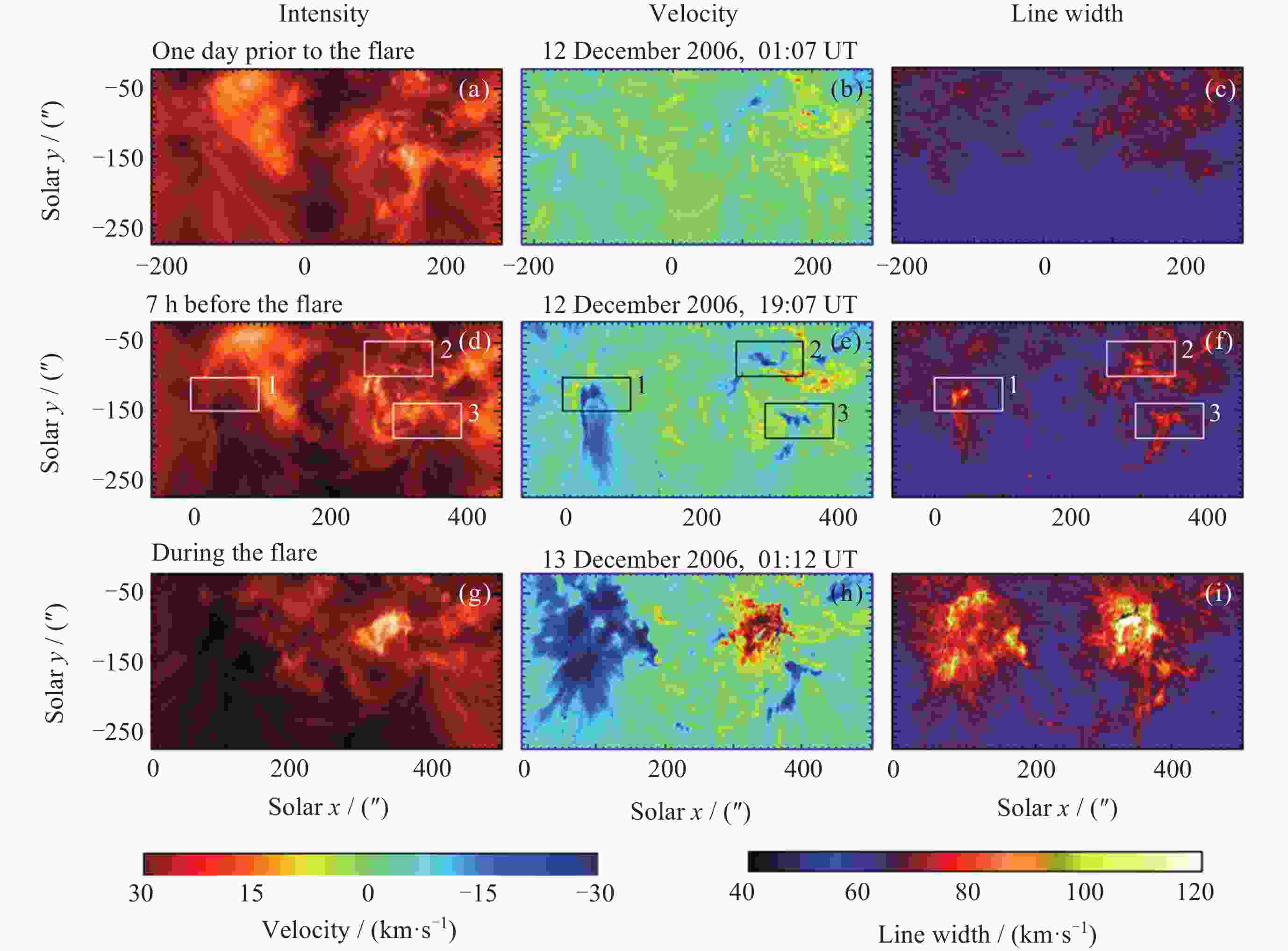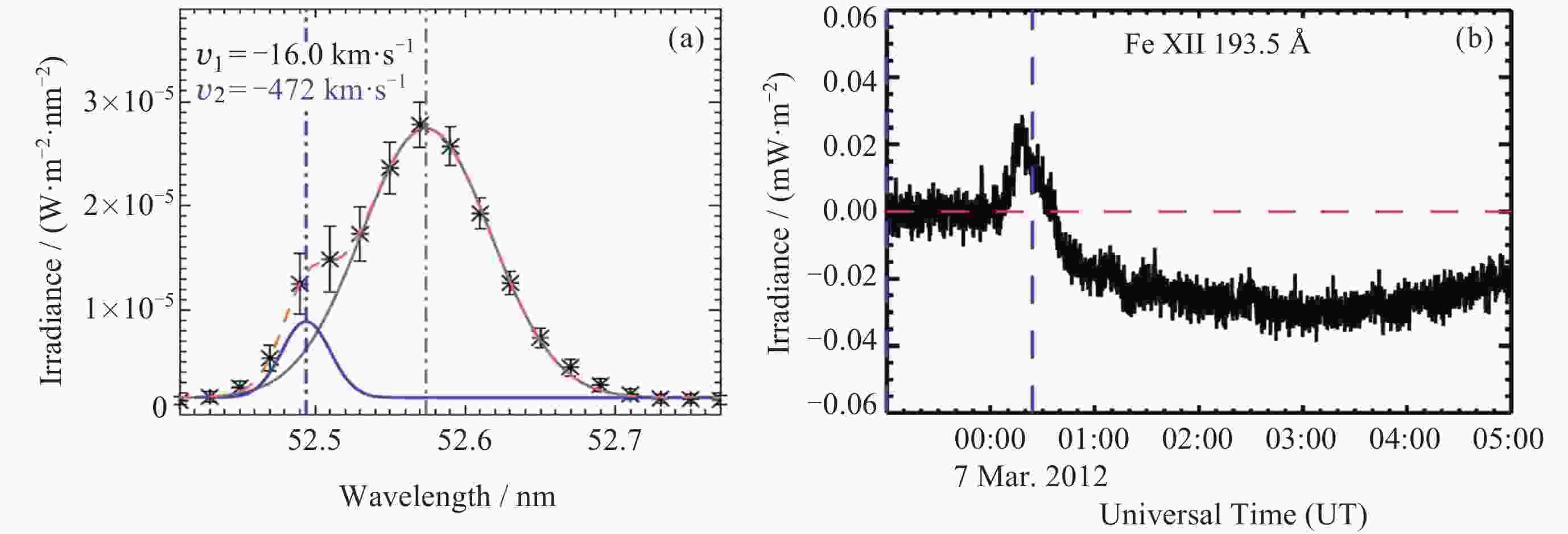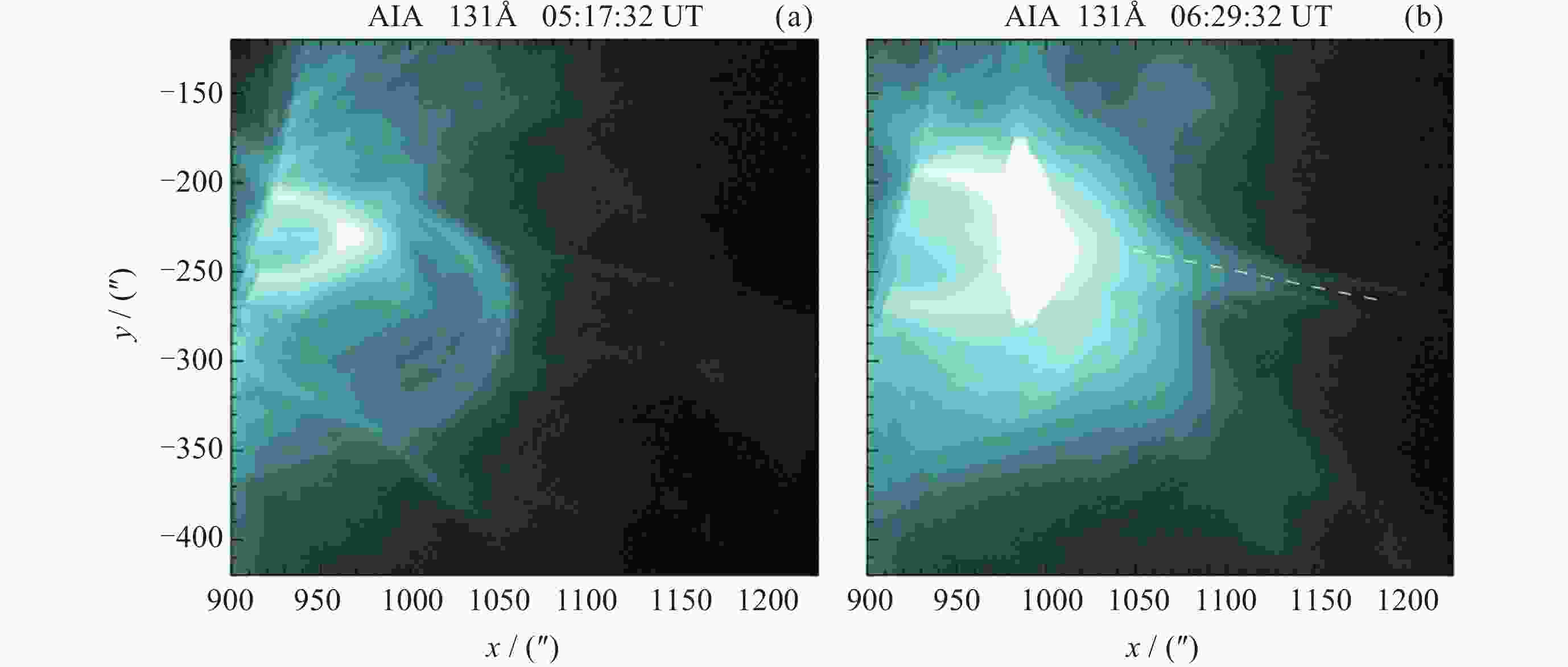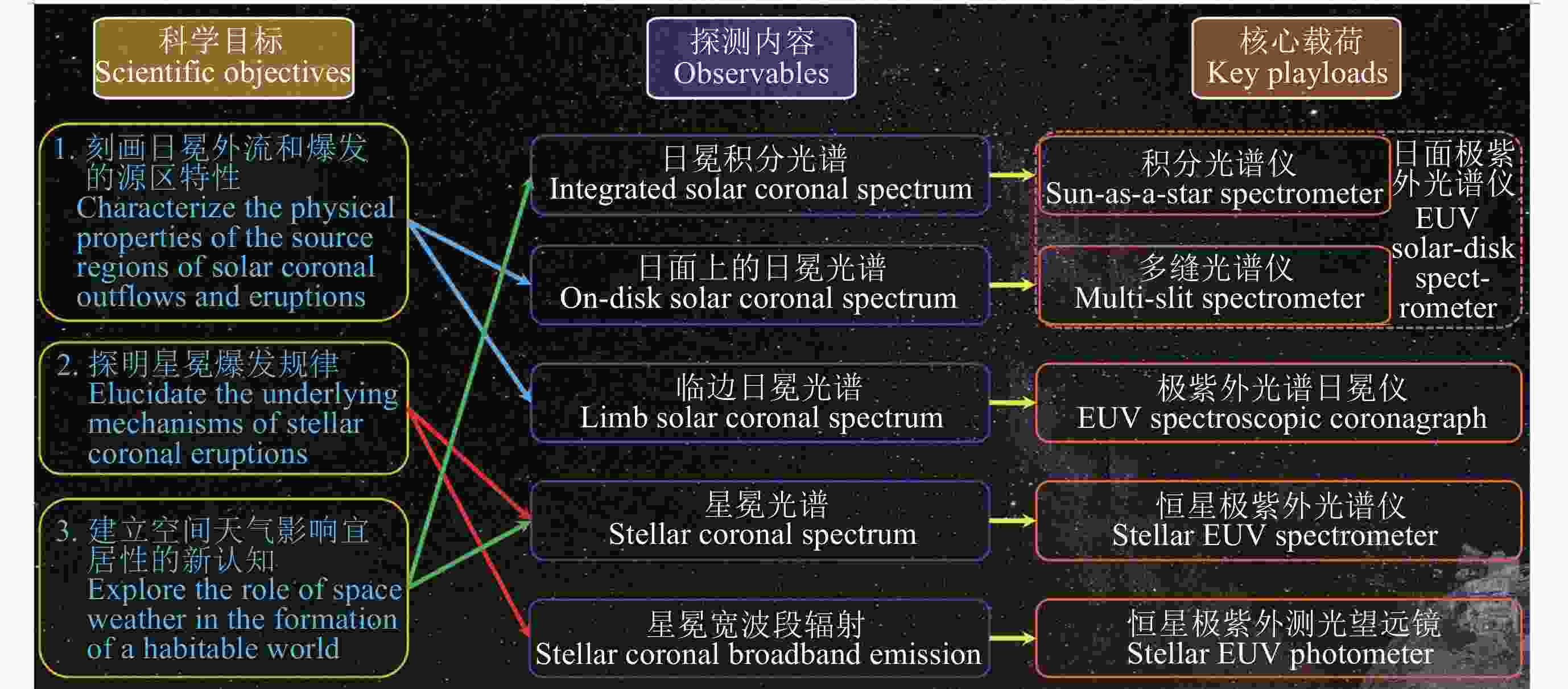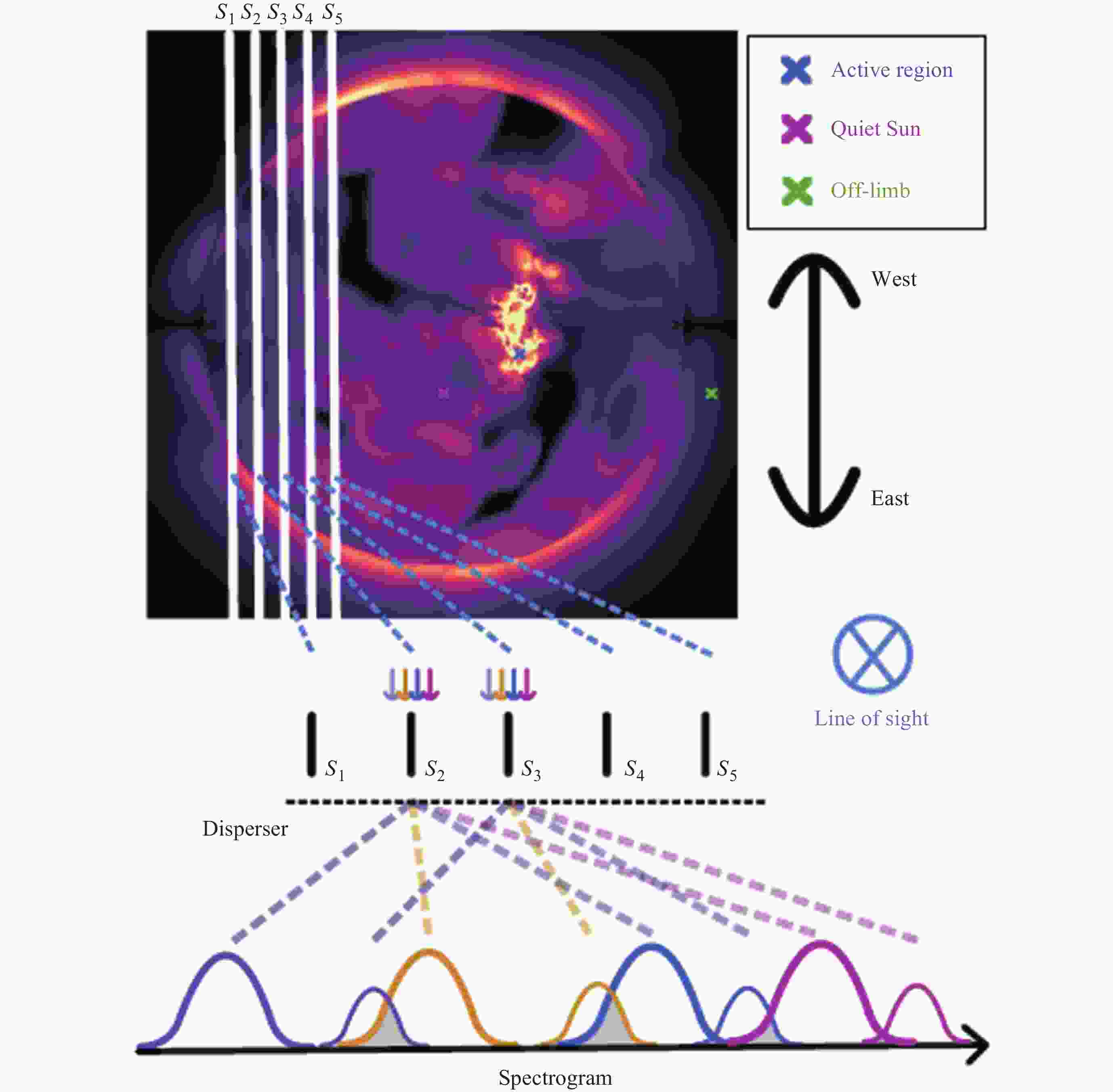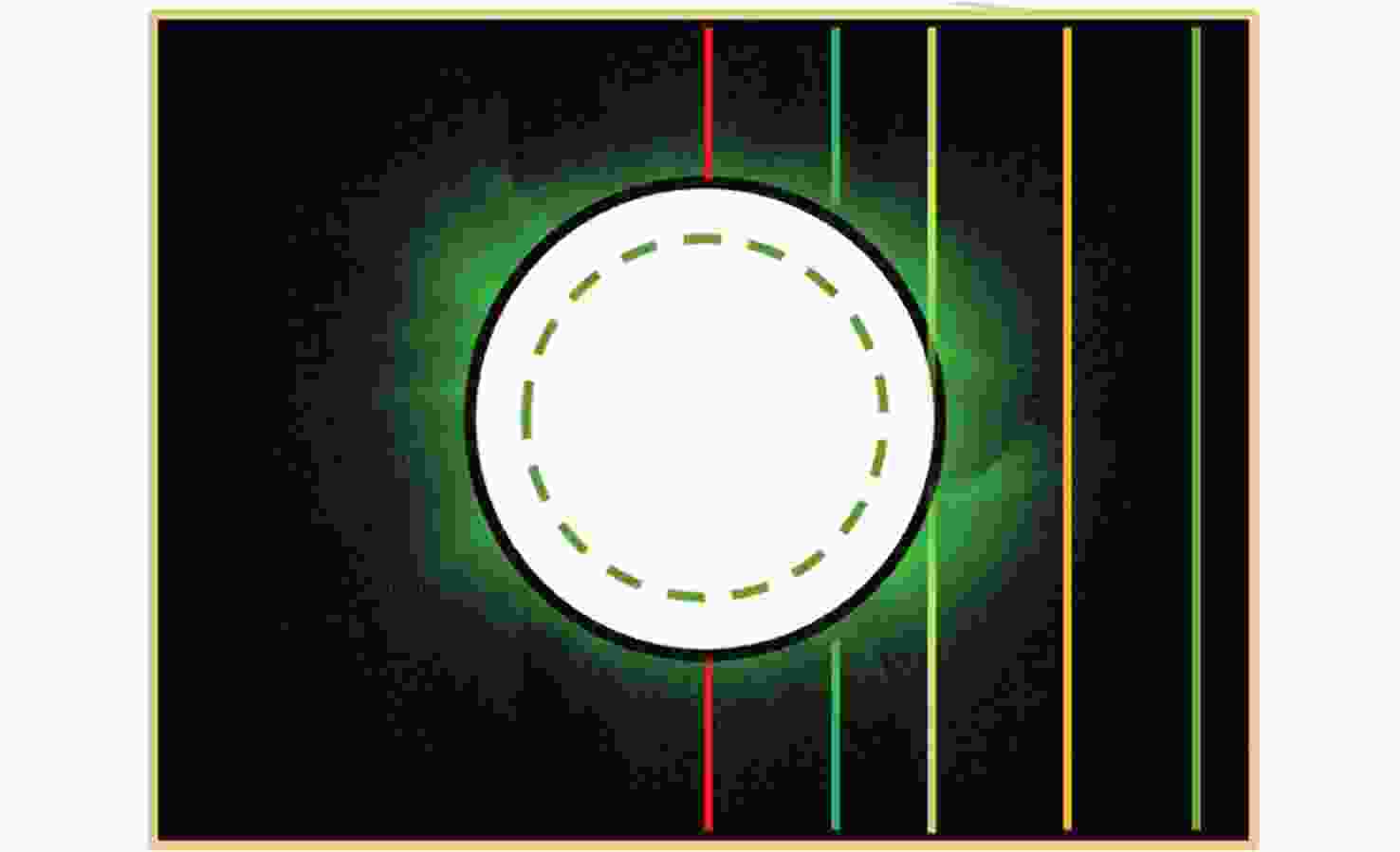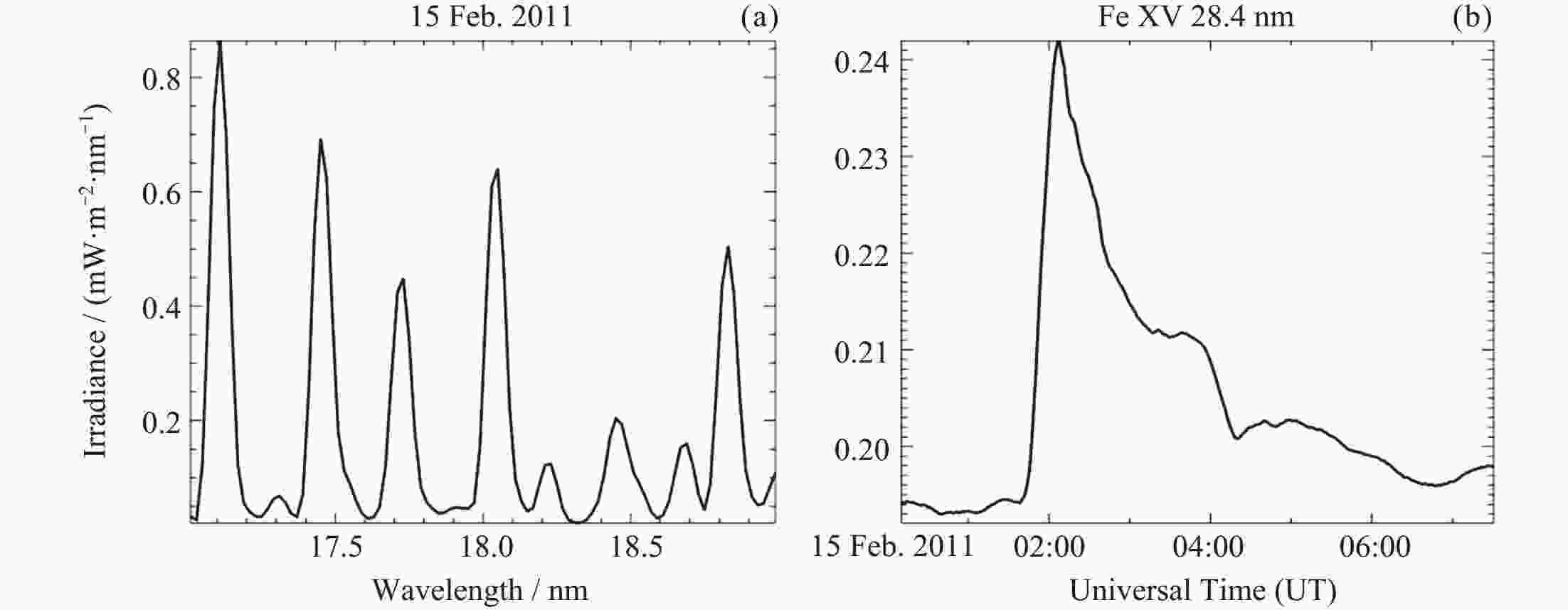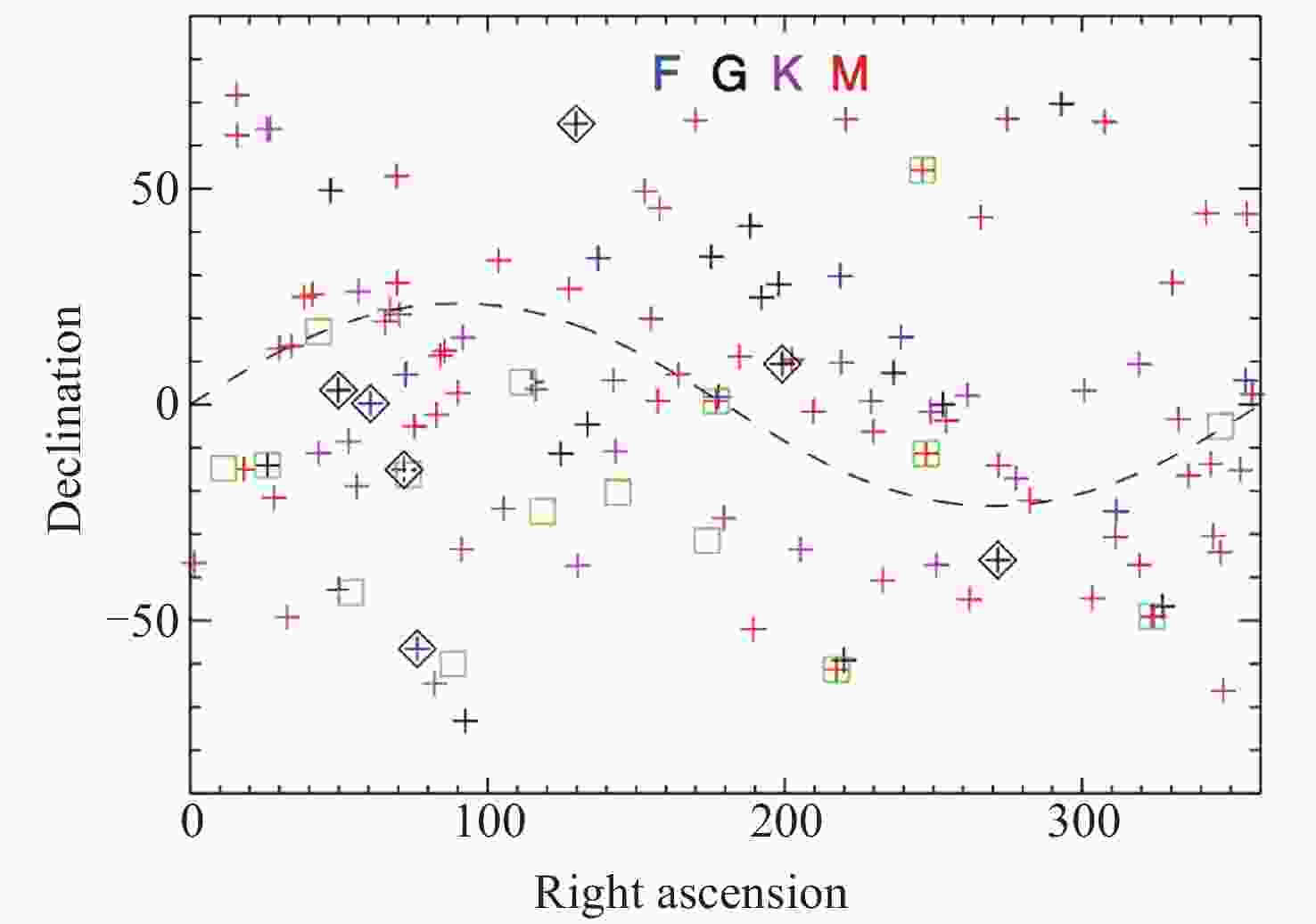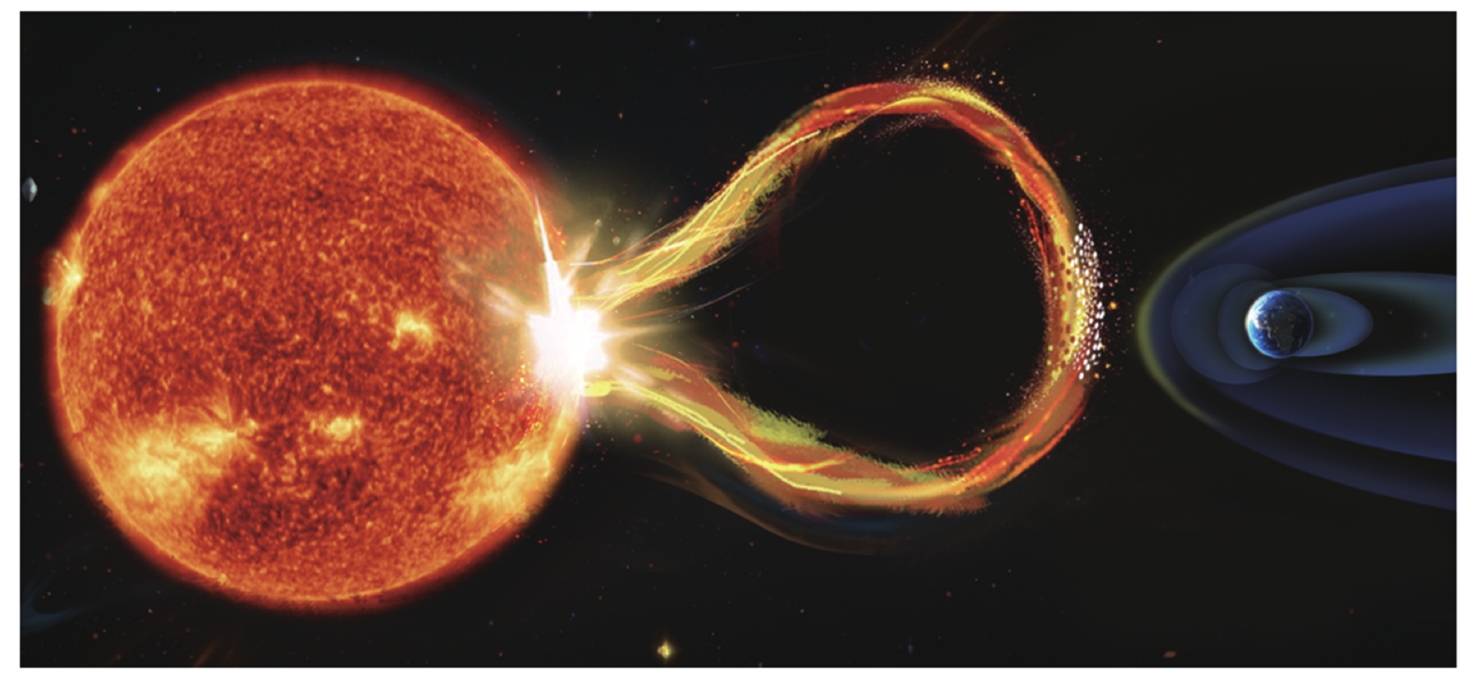Coronal Explorer for the Sun and Nearby Stars
-
摘要: 空间天气探源计划(探冕计划)将在同一颗卫星平台上实现对太阳和晚型恒星的同步观测, 以揭示太阳系内外空间天气的源头——日冕和星冕的物理性质及爆发规律. 卫星拟工作在约720 km高度的太阳同步轨道, 同时对日冕和星冕开展长期、连续的观测. 通过搭载日面极紫外光谱仪、极紫外光谱日冕仪、恒星极紫外光谱仪、恒星极紫外测光望远镜等载荷, 该计划将在三个方面取得重要突破: 第一, 通过首次开展全日面视场的日冕光谱观测, 刻画日冕外流和爆发的源区特性, 推动太阳系空间天气的精准预报; 第二, 通过填补当前太阳系外极紫外探测的空白, 探明星冕爆发规律, 从而开拓太阳系外空间天气的新疆域; 第三, 通过对太阳和其他恒星同步开展点源极紫外探测, 并结合模型, 建立空间天气影响行星宜居性的新认知.Abstract: We propose to launch the first Extreme-Ultraviolet (EUV) space science mission in China, the Coronal Explorer for the Sun and nearby Stars (CESS), to explore the sources of space weather both within and beyond the solar system, specifically the solar and stellar coronae. The CESS mission is designed to observe the Sun and nearby late-type stars from a single satellite platform. The spacecraft will operate in a 720-km-altitude sun-synchronous orbit, enabling continuous and uninterrupted solar coronal observations. Simultaneously, observations of nearby stars will be achieved using an alt-azimuth mount for precise pointing and long-term tracking, facilitating continuous monitoring of stellar coronae. The primary scientific objects of this mission are as follows. (1) Characterize the physical properties of the source regions of solar coronal outflows and eruptions through full-disk EUV spectroscopy of the Sun. (2) Fill the current observational gap in extrasolar EUV observations, detect stellar coronal eruptions through long-term EUV photometric and spectroscopic monitoring of the coronae of selected nearby late-type stars, and pioneer a new frontier in understanding extrasolar space weather (space weather in star-exoplanet systems). (3) Explore the role of space weather in the formation of a habitable world through point-source EUV observations of the Sun and other stars, and provide crucial clues for addressing the profound question: are we alone in the universe? To fulfill these scientific goals, the spacecraft will be equipped with four key science payloads: an EUV solar-disk spectrometer (comprising a Sun-as-a-star spectrometer and a multi-slit spectrometer with a full-disk field of view), an EUV spectroscopic coronagraph, a stellar EUV spectrometer, and a stellar EUV photometer. The CESS mission will contribute to the precise prediction of space weather in the solar system, uncover the origin of exosolar space weather, and offer crucial clues for the search for potentially habitable worlds and extraterrestrial life.
-
Key words:
- Extreme ultraviolet radiation /
- Solar corona /
- Stellar coronae /
- Space weather /
- Planetary habitability
-
表 1 日面极紫外光谱仪主要技术指标
Table 1. Key technical specifications of the EUV solar-disk spectrometer
设备 多缝光谱仪 积分光谱仪 观测物理量 视向速度、密度、温度 视向速度、密度、温度 观测视场 ≥ 40′ × 40′ ≥ Φ40′ 空间分辨率 ≤ 8″ — 狭缝视场 4″× 40′ /条, 5条 — 观测波段 18.4~19.7 nm 17.0~20.5 nm, 25.5~29.0 nm, 94.0~109.0 nm 光谱分辨本领 ≥ 1000@19.5 nm ≥ 500@19.5 nm 时间分辨率 ≤ 300 s ≤ 60 s 表 2 极紫外光谱日冕仪主要技术指标
Table 2. Key technical specifications of the EUV spectroscopic coronagraph
观测物理量 速度、温度、密度 观测波段 94~109 nm 垂直狭缝方向视场 0~3 Rs (径向从1.3 Rs开始) 沿狭缝方向视场 –2 ~2 Rs 狭缝条数 5 狭缝宽度 不小于25″(50 μm) 探测器参数 像素大小25 μm × 25 μm,
面阵大小1024 pixel × 2048 pixel光谱分辨本领 约 2000@103 nm 空间像元分辨率 7.5″ /pixel 时间分辨率 6 min 表 3 恒星极紫外光谱仪主要技术指标
Table 3. Key technical specifications of the stellar EUV spectrometer
观测物理量 视向速度、密度、温度 观测视场 ≥ 5′ 空间分辨率 ≤ 40″ 观测波段 9.0~13.0 nm, 17.0~20.5 nm, 25.5~29.0 nm 光谱分辨本领 ≥ 1000@19.5 nm 有效面积 ≥ 20 cm2 时间分辨率 约60 min 表 4 恒星极紫外测光望远镜主要技术指标
Table 4. Key technical specifications of the stellar EUV photometer
观测参数 辐射强度 观测视场 约5° × 5° 空间分辨率 ≤ 40″ 工作波段 9.4 nm, 12.9 nm, 17.4 nm, 28.4 nm 带宽 ≤ 1 nm 有效面积 ≥ 20 cm2 时间分辨率 约10 min -
[1] AIRAPETIAN V S, GLOCER A, KHAZANOV G V, et al. How hospitable are space weather affected habitable zones? the role of ion escape[J]. The Astrophysical Journal Letters, 2017, 836(1): L3 doi: 10.3847/2041-8213/836/1/L3 [2] 田晖, 白先勇, 邓元勇, 等. 晚型恒星极紫外和X射线探测的科学目标与初步方案[J]. 中国科学: 物理学、力学、天文学, 2022, 52(11): 119511TIAN Hui, BAI Xianyong, DENG Yuanyong, et al. Scientific objectives and preliminary plans for EUV and X-ray observations of late-type stars[J]. Scientia Sinica Physica, Mechanica :Times New Roman;">& Astronomica, 2022, 52(11): 119511 [3] LINSKY J. Host Stars and their Effects on Exoplanet Atmospheres: An Introductory Overview[M]. 2nd ed. Springer Nature Switzerland: Springer, 2025 [4] AIRAPETIAN V S, GLOCER A, GRONOFF G E, et al. Prebiotic chemistry and atmospheric warming of early Earth by an active young Sun[J]. Nature Geoscience, 2016, 9(6): 452-455 doi: 10.1038/ngeo2719 [5] DOMINGO V, FLECK B, POLAND A I. The SOHO mission: an overview[J]. Solar Physics, 1995, 162: 1-37 doi: 10.1007/BF00733425 [6] KAISER M L, KUCERA T A, DAVILA J M, et al. The STEREO mission: an introduction[J]. Space Science Reviews, 2008, 136(1/2/3/4): 5-16 [7] PESNELL W D, THOMPSON B J, CHAMBERLIN P C. The Solar Dynamics Observatory (SDO)[J]. Solar Physics, 2012, 275: 3-15 doi: 10.1007/s11207-011-9841-3 [8] MÜLLER D, ST CYR O C, ZOUGANELIS I, et al. The solar orbiter mission-science overview[J]. Astronomy :Times New Roman;">& Astrophysics, 2020, 642(1): A1 [9] DEFOREST C, KILLOUGH R, GIBSON S, et al. Polarimeter to UNify the corona and heliosphere (PUNCH): science, status, and path to flight[C]//2022 IEEE Aerospace Conference (AERO). Big Sky: IEEE, 2022: 1-11 [10] GOSLING J T. The solar flare myth[J]. Journal of Geophysical Research: Space Physics, 1993, 98(A11): 18937-18949 doi: 10.1029/93JA01896 [11] TIAN H, MCINTOSH S W, XIA L D, et al. What can we learn about solar coronal mass ejections, coronal dimmings, and extreme-ultraviolet jets through spectroscopic observations?[J]. The Astrophysical Journal, 2012, 748(2): 106 doi: 10.1088/0004-637X/748/2/106 [12] ANDERSON M, APPOURCHAUX T, AUCHÈRE F, et al. The solar orbiter SPICE instrument. an extreme UV imaging spectrometer[J]. Astronomy :Times New Roman;">& Astrophysics, 2020, 642: A14 [13] SHIMIZU T, IMADA S, KAWATE T, et al. The Solar-C (EUVST) mission: the latest status[J]. Proceedings of the SPIE, 2020, 11444: 114440N [14] DE PONTIEU B, MARTÍNEZ-SYKORA J, TESTA P, et al. The multi-slit approach to coronal spectroscopy with the Multi-slit Solar Explorer (MUSE)[J]. The Astrophysical Journal, 2020, 888(1): 3 doi: 10.3847/1538-4357/ab5b03 [15] WINEBARGER A R, WEBER M, BETHGE C, et al. Unfolding overlapped slitless imaging spectrometer data for extended sources[J]. The Astrophysical Journal, 2019, 882(1): 12 doi: 10.3847/1538-4357/ab21db [16] KOHL J L, ESSER R, GARDNER L D, et al. The Ultraviolet Coronagraph Spectrometer for the Solar and Heliospheric Observatory[J]. Solar Physics, 1995, 162(1/2): 313-356 [17] CHEN B, ZHANG X X, HE L P, et al. Solar X-ray and EUV imager on board the FY-3E satellite[J]. Light: Science & Applications, 2022, 11(1): 329 [18] BAI X Y, TIAN H, DENG Y Y, et al. The Solar Upper Transition Region Imager (SUTRI) onboard the SATech-01 satellite[J]. Research in Astronomy and Astrophysics, 2023, 23(6): 065014 doi: 10.1088/1674-4527/accc74 [19] LI C, FANG C, LI Z, et al. The Chinese Hα Solar Explorer (CHASE) mission: an overview[J]. Science China Physics, Mechanics & Astronomy, 2022, 65(8): 289602 [20] GAN W Q, ZHU C, DENG Y Y, et al. The Advanced Space-based Solar Observatory (ASO-S)[J]. Solar Physics, 2023, 298(5): 68 doi: 10.1007/s11207-023-02166-x [21] FENG L, LI H, CHEN B, et al. The Lyman-alpha Solar Telescope (LST) for the ASO-S mission - III. data and potential diagnostics[J]. Research in Astronomy and Astrophysics, 2019, 19(11): 162 doi: 10.1088/1674-4527/19/11/162 [22] 田晖, 徐昱, 陈何超, 等. 星冕物质抛射的探测与建模[J]. 中国科学: 技术科学, 2023, 53(12): 2021-2038TIAN Hui, XU Yu, CHEN Hechao, et al. Observations and simulations of stellar coronal mass ejections[J]. Scientia Sinica(Technologica), 2023, 53(12): 2021-2038 [23] NAMEKATA K, MAEHARA H, HONDA S, et al. Probable detection of an eruptive filament from a superflare on a solar-type star[J]. Nature Astronomy, 2022, 6: 241-248 [24] LU H P, TIAN H, ZHANG L Y, et al. An extreme stellar prominence eruption observed by LAMOST time-domain spectroscopy[J]. The Astrophysical Journal Letters, 2025, 978(2): L32 doi: 10.3847/2041-8213/ad93cc [25] VERONIG A M, ODERT P, LEITZINGER M, et al. Indications of stellar coronal mass ejections through coronal dimmings[J]. Nature Astronomy, 2021, 5: 697-706 doi: 10.1038/s41550-021-01345-9 [26] ARGIROFFI C, REALE F, DRAKE J J, et al. A stellar flare-coronal mass ejection event revealed by X-ray plasma motions[J]. Nature Astronomy, 2019, 3: 742-748 doi: 10.1038/s41550-019-0781-4 [27] CHEN H C, TIAN H, LI H, et al. Detection of flare-induced plasma flows in the corona of EV lac with X-Ray spectroscopy[J]. The Astrophysical Journal, 2022, 933(1): 92 doi: 10.3847/1538-4357/ac739b [28] FRANCE K, FLEMING B T, DRAKE J J, et al. The Extreme-ultraviolet Stellar Characterization for Atmospheric Physics and Evolution (ESCAPE) mission concept[J]. Proceedings of the SPIE, 2019, 11118: 1111808 [29] BOWYER S, MALINA R F. The extreme ultraviolet explorer mission[J]. Advances in Space Research, 1991, 11(11): 205-215 doi: 10.1016/0273-1177(91)90077-W [30] BARSTOW M A, CASEWELL S L, HOLBERG J B, et al. The status and future of EUV astronomy[J]. Advances in Space Research, 2014, 53(6): 1003-1013 doi: 10.1016/j.asr.2013.08.007 [31] CRAIG N, ABBOTT M, FINLEY D, et al. The extreme ultraviolet explorer stellar spectral atlas[J]. The Astrophy-sical Journal Supplement Series, 1997, 113(1): 131 doi: 10.1086/313052 [32] WEISSKOPF M C, TANANBAUM H D, VAN SPEYBROECK L P, et al. Chandra X-ray Observatory (CXO): overview[J]. Proceedings of the SPIE, 2000, 4012: 2-16 doi: 10.1117/12.391545 [33] BARSTOW M A, KOWALSKI M P, EVES S, et al. Observatory-class science with a low-cost EUV astronomy mission[J]. Proceedings of the SPIE, 2012, 8443: 844303 doi: 10.1117/12.924903 [34] DRAKE J J, CHEIMETS P, GARRAFFO C, et al. NExtUP: the normal-incidence extreme ultraviolet photometer[J]. Proceedings of the SPIE, 2021, 11821: 1182108 [35] WOODS T N, EPARVIER F G, HOCK R, et al. Extreme ultraviolet Variability Experiment (EVE) on the Solar Dynamics Observatory (SDO): overview of science objectives, instrument design, data products, and model developments[J]. Solar Physics, 2012, 275(1/2): 115-143 [36] CUI X Q, ZHAO Y H, CHU Y Q, et al. The Large sky Area Multi-object fiber Spectroscopic Telescope (LAMOST)[J]. Research in Astronomy and Astrophysics, 2012, 12(9): 1197-1242 doi: 10.1088/1674-4527/12/9/003 [37] LU H P, TIAN H, ZHANG L Y, et al. Possible detection of coronal mass ejections on late-type main-sequence stars in LAMOST medium-resolution spectra[J]. Astronomy :Times New Roman;">& Astrophysics, 2022, 663: A140 [38] MENG X M, HAN X H, WEI J Y, et al. NUV star catalog from the lunar-based ultraviolet telescope survey: first release[J]. Research in Astronomy and Astrophysics, 2016, 16(11): 168 doi: 10.1088/1674-4527/16/11/168 [39] 刘慧根, 周济林, 霍卓玺, 等. 恒星活动与系外宜居行星探索卫星——“紫瞳”科学卫星[J]. 空间科学与试验学报, 2024, 1(1): 23-32LIU Huigen, ZHOU Jilin, HUO Zhuoxi, et al. Ultraviolet-visible stellar activity and habitable exoplanet survey —— the UVEYES satellite[J]. Journal of Space Science and Experiment, 2024, 1(1): 23-32 [40] HASSLER D M, DAMMASCH I E, LEMAIRE P, et al. Solar wind outflow and the chromospheric magnetic network[J]. Science, 1999, 283(5403): 810-813 doi: 10.1126/science.283.5403.810 [41] TU C Y, ZHOU C, MARSCH E, et al. Solar wind origin in coronal funnels[J]. Science, 2005, 308(5721): 519-523 doi: 10.1126/science.1109447 [42] TIAN H, HARRA L, BAKER D, et al. Upflows in the upper solar atmosphere[J]. Solar Physics, 2021, 296(3): 47 doi: 10.1007/s11207-021-01792-7 [43] BROOKS D H, UGARTE-URRA I, WARREN H P. Full-Sun observations for identifying the source of the slow solar wind[J]. Nature Communications, 2015, 6(1): 5947 doi: 10.1038/ncomms6947 [44] IMADA S, BAMBA Y, KUSANO K. Coronal behavior before the large flare onset[J]. Publications of the Astronomical Society of Japan, 2014, 66(SP1): S17 doi: 10.1093/pasj/psu092 [45] HARRA L K, WILLIAMS D R, WALLACE A J, et al. Coronal nonthermal velocity following helicity injection before an X-class flare[J]. The Astrophysical Journal, 2009, 691(2): L99-L102 doi: 10.1088/0004-637X/691/2/L99 [46] JEFFREY N L S, FLETCHER L, LABROSSE N, et al. The development of lower-atmosphere turbulence early in a solar flare[J]. Science Advances, 2018, 4(12): 2794 doi: 10.1126/sciadv.aav2794 [47] YANG Z H, TIAN H, ZHU Y J, et al. Is it possible to detect coronal mass ejections on solar-type stars through extreme-ultraviolet spectral observations?[J]. The Astrophysical Journal, 2024, 966(1): 24 doi: 10.3847/1538-4357/ad2a44 [48] XU Y, TIAN H, HOU Z Y, et al. Sun-as-a-star spectroscopic observations of the line-of-sight velocity of a solar eruption on 2021 October 28[J]. The Astrophysical Journal, 2022, 931(2): 76 doi: 10.3847/1538-4357/ac69d5 [49] MASON J P, WOODS T N, CASPI A, et al. Mechanisms and observations of coronal dimming for the 2010 August 7 event[J]. The Astrophysical Journal, 2014, 789(1): 61 doi: 10.1088/0004-637X/789/1/61 [50] MAEHARA H, SHIBAYAMA T, NOTSU S, et al. Superflares on solar-type stars[J]. Nature, 2012, 485(7399): 478-481 doi: 10.1038/nature11063 [51] HARRA L K, SCHRIJVER C J, JANVIER M, et al. The characteristics of solar X-class flares and CMEs: a paradigm for stellar superflares and eruptions?[J]. Solar Physics, 2016, 291(6): 1761-1782 doi: 10.1007/s11207-016-0923-0 [52] LIU R. Dynamical processes at the vertical current sheet behind an erupting flux rope[J]. Monthly Notices of the Royal Astronomical Society, 2013, 434(2): 1309-1320 doi: 10.1093/mnras/stt1090 [53] POPPENHAEGER K, SCHMITT J H M M, WOLK S J. Transit observations of the hot jupiter HD 189733b at X-ray wavelengths[J]. The Astrophysical Journal, 2013, 773(1): 62 doi: 10.1088/0004-637X/773/1/62 [54] AIRAPETIAN V S, BARNES R, COHEN O, et al. Impact of space weather on climate and habitability of terrestrial-type exoplanets[J]. International Journal of Astrobiology, 2020, 19(2): 136-194 doi: 10.1017/S1473550419000132 [55] CHAN L, TIAN H, LIU X Y, et al. Global coronal plasma diagnostics based on multislit extreme-ultraviolet spectroscopy[J]. The Astrophysical Journal, 2024, 967(2): 162 doi: 10.3847/1538-4357/ad4114 [56] FENG Y F, BAI X Y, GUO S F, et al. Optical optimization of a multi-slit extreme ultraviolet spectrograph for global solar corona diagnostics[J]. Experimental Astronomy, 2024, 58(3): 13 doi: 10.1007/s10686-024-09961-9 [57] TAMBURRI C A, KAZACHENKO M D, KOWALSKI A F. The relationships among solar flare impulsiveness, energy release, and ribbon development[J]. The Astrophysical Journal, 2024, 966(1): 94 doi: 10.3847/1538-4357/ad3047 [58] TIAN H, TU C Y, MARSCH E, et al. The nascent fast solar wind observed by the EUV imaging spectrometer on board hinode[J]. The Astrophysical Journal Letters, 2010, 709(1): L88-L93 doi: 10.1088/2041-8205/709/1/L88 [59] CHEUNG M C M, DE PONTIEU B, MARTÍNEZ-SYKORA J, et al. Multi-component decomposition of astronomical spectra by compressed Sensing[J]. The Astrophysical Journal, 2019, 882(1): 13 doi: 10.3847/1538-4357/ab263d [60] LU H P, TIAN H, CHEN H C, et al. Full velocities and propagation directions of Coronal Mass Ejections inferred from simultaneous full-disk imaging and Sun-as-a-star spectroscopic observations[J]. The Astrophysical Journal, 2023, 953(1): 68 doi: 10.3847/1538-4357/acd6a1 [61] CHENG Z X, WANG Y M, LIU R, et al. Plasma motion inside flaring regions revealed by doppler shift information from SDO/EVE observations[J]. The Astrophysical Journal, 2019, 875(2): 93 doi: 10.3847/1538-4357/ab0f2d [62] YANG Z H, TIAN H, BAI X Y, et al. Can we detect coronal mass ejections through asymmetries of sun-as-a-star extreme-ultraviolet spectral line profiles?[J]. The Astrophysical Journal Supplement Series, 2022, 260(2): 36 doi: 10.3847/1538-4365/ac6607 [63] GIORDANO S, CIARAVELLA A, RAYMOND J C, et al. UVCS/SOHO catalog of coronal mass ejections from 1996 to 2005: spectroscopic proprieties[J]. Journal of Geophysical Research: Space Physics, 2013, 118(3): 967-981 -
-





 田晖 1982年8月出生于湖北蕲春, 北京大学地球与空间科学学院教授, 博士生导师, 主要从事太阳物理、恒星磁活动、空间极紫外探测等方面的研究, 在日冕加热机制和磁场测量原理、星冕物质抛射的搜寻和建模等方面取得了一系列研究成果. E-mail:
田晖 1982年8月出生于湖北蕲春, 北京大学地球与空间科学学院教授, 博士生导师, 主要从事太阳物理、恒星磁活动、空间极紫外探测等方面的研究, 在日冕加热机制和磁场测量原理、星冕物质抛射的搜寻和建模等方面取得了一系列研究成果. E-mail: 
 下载:
下载:

